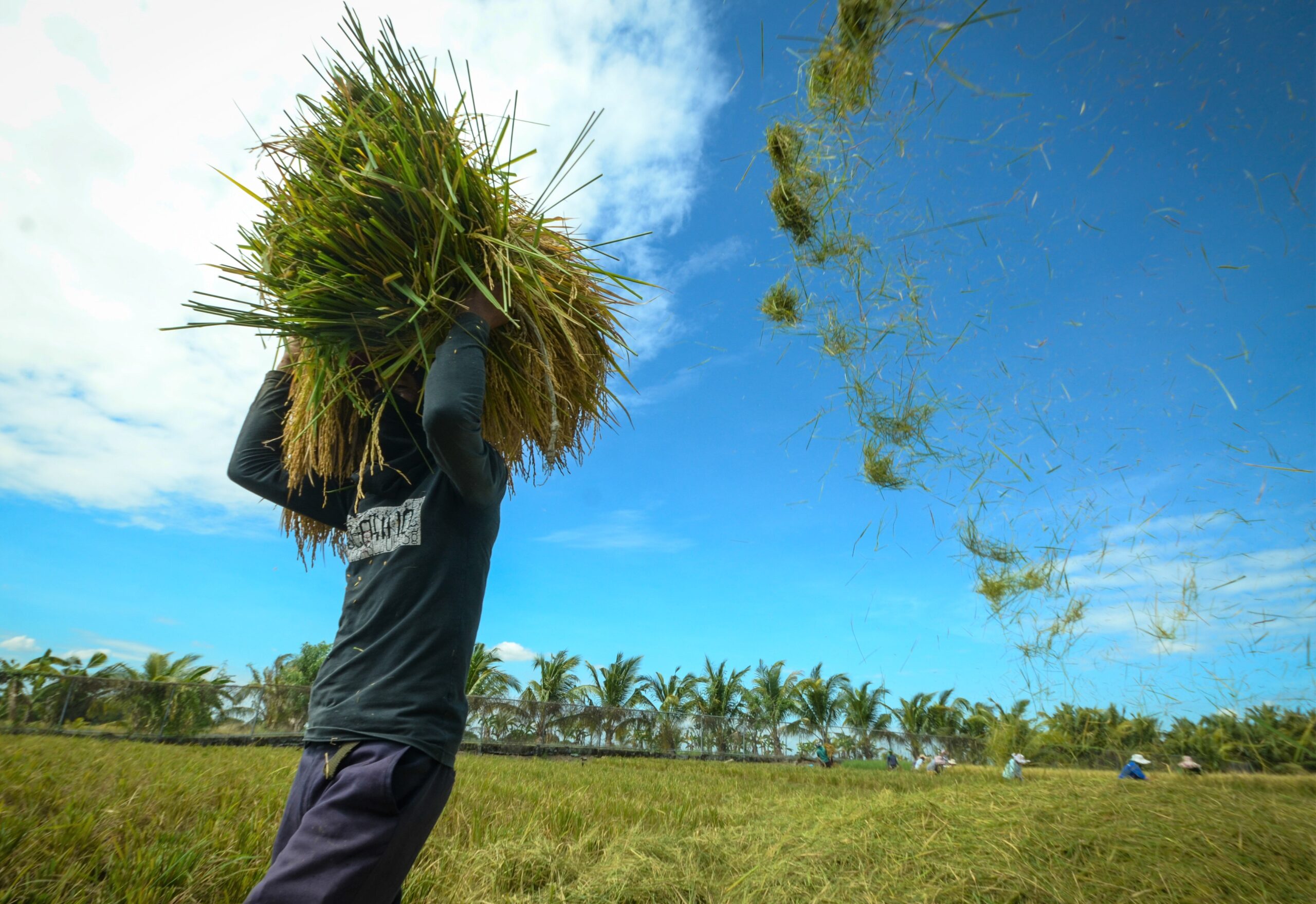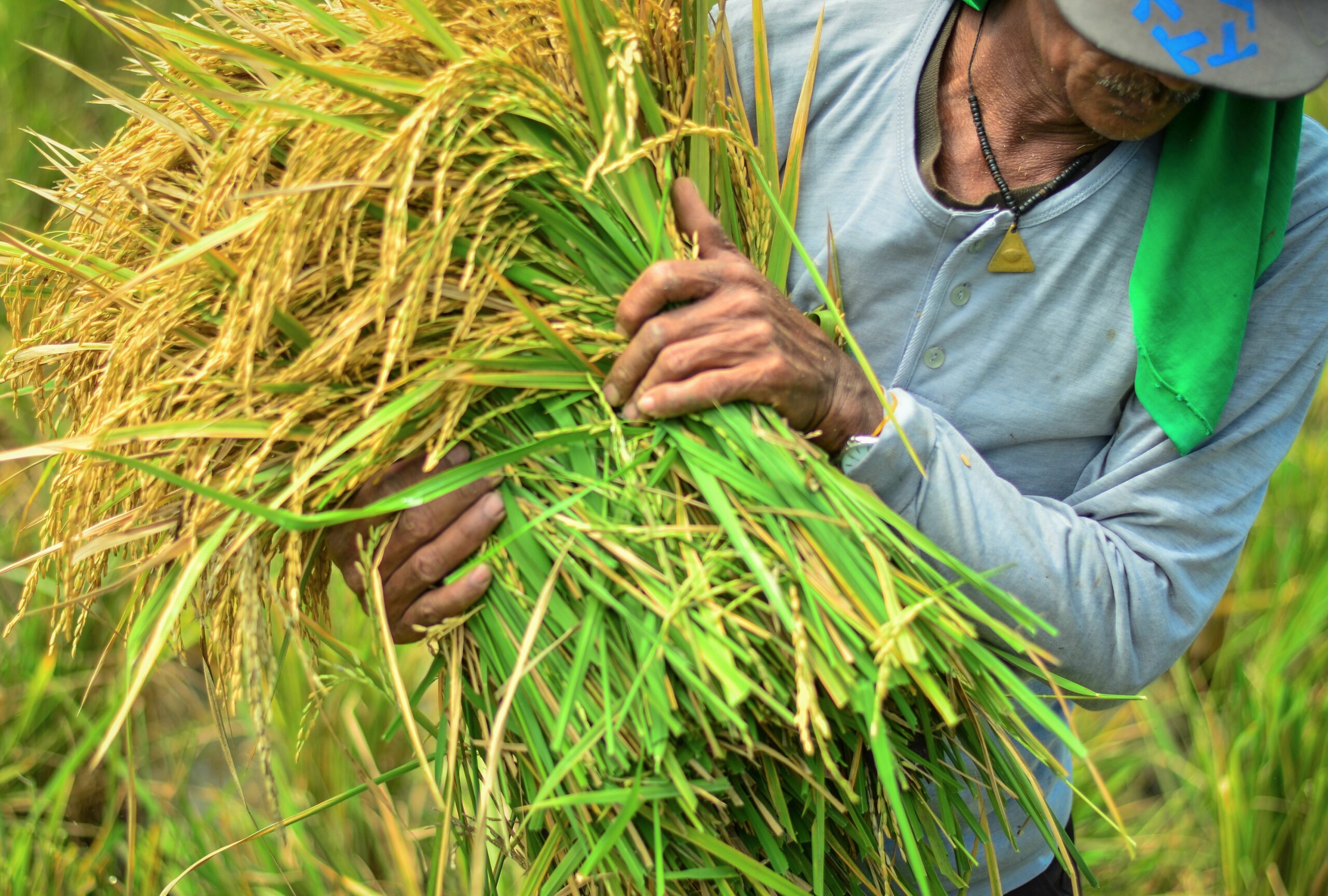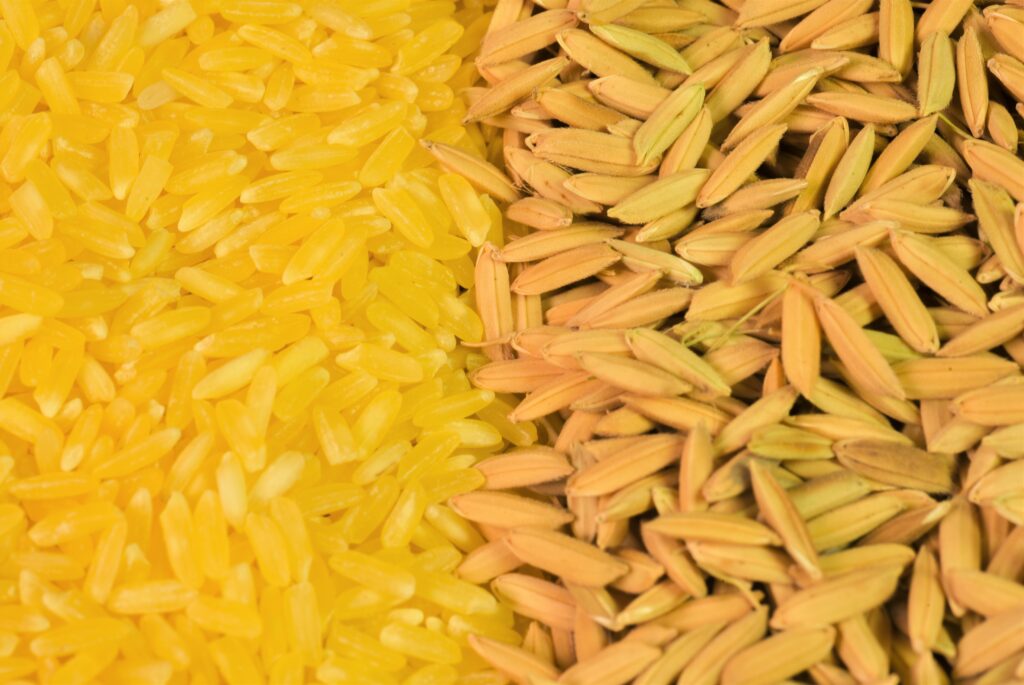Text by Henrylito D. Tacio
Photos: DA-PhilRice
For every peso Filipinos spend on food, studies show, 20 centavos go-to rice. “If we did not have rice, our deepest comfort food, we would probably feel less Filipino,” the late food columnist Doreen Fernandez once said.
Unknowingly, only the green parts of the rice plants – and not the grain! – contains the vital precursor of vitamin A (beta-carotene). This contributes to the persistent inadequacy of vitamin A in the Filipino diet.
In its 2019 Expanded National Nutrition Survey, the Food and Nutrition Research Institute (FNRI) of the Department of Science and Technology reports that VAD affects 15.5% of children aged six months to 5 years.
The Geneva-based World Health Organization (WHO) estimated between 250,000 to 500,000 vitamin A-deficient children worldwide becoming blind every year, half of them dying within 12 months of losing their sight.
Several studies have also shown that providing adequate amounts of vitamin A can reduce overall child mortality from common illnesses (including measles, severe pneumonia, and persistent diarrhea) by 23-24%.
Until now, these deficiency symptoms could be only partially remedied by food supplements or vitamin and mineral enriched foods. But here’s one good news: scientists have created a strain of genetically altered rice to combat vitamin A deficiency.
The “golden rice,” as the media calls it, got its name from its golden yellow color, an indication of its beta carotene content. It was developed by combining a gene from corn and a common soil microorganism that together produce beta carotene in the grain.
Laboratory tests indicate that the plants can provide enough beta-carotene for the body to provide the recommended dietary allowance of vitamin A from a daily ration of rice.
Contrary to what the opponents claim, golden rice is “as safe as conventional rice.” This was the finding issued by the Bureau of Plant Industry (BPI) “after rigorous biosafety assessment.”
Last year, golden rice was approved for commercial propagation. The Department of Agriculture-Philippine Rice Research Institute (DA-PhilRice) is now ramping up its seed production operations so that it can deploy the seeds to interested farmers soon.


Last May 6, PhilRice handed over golden rice seeds to farmers who will participate in the expanded golden rice seed production in the coming wet season planting. The ceremonial handover was witnessed by Agriculture Secretary William Dar during his visit to the institute’s central experiment station in the Science City of Muñoz in Nueva Ecija.
“We are committed to ensuring the highest quality of seed for farmers and a safe and nutritious food supply for all Filipinos,” said Dr. John de Leon, DA-PhilRice executive director.
Currently, DA-PhilRice is expanding its seed production phase of the golden rice deployment plan. “In Mindanao, we are in the process of handing over seeds to the Department of Agriculture and PhilRice stations and selected seed growers and farmers in Lanao del Norte, Agusan del Sur, and Maguindanao,” says Dr. Ronan G. Zagado, PhilRice’s program leader of golden rice.
In Luzon, the pilot provinces are Quirino and Catanduanes. Samar and Antique are the pilot areas for the Visayas.
“We are focusing on these provinces first due to limited seed supply, and we look forward to widening the scope of our outreach as soon as we are able to provide more seeds to different areas,” he explains.
According to Dr. Zagado, these pilot deployment provinces were selected according to a range of criteria, including rice production and nutrition status. “We have identified provinces with a high malnutrition rate and those that are part of the Philippine Plan of Action on Nutrition’s priority provinces.”
He assures, however, that once the seed supply increases exponentially, PhilRice may be able to make golden rice available to farmers in other provinces, including the Davao region.
“We have allotted around 80 kilograms for each pilot province for wet season planting this year,” Dr. Zagado says. “The golden rice production will be increased in the next cropping seasons as more seed supply becomes available.”
To plant a hectare with golden rice, the recommendation is 20-40 kilograms of seeds for optimum yield.
Farmers who will plant golden rice on their farms need not change their farm practices. “We do not expect farmers to change their farm management practices in order to plant golden rice,” Dr. Zagado says. “Everything about local cultivation practices currently followed for conventional rice varieties, including the application of fertilizer, crop protection products, and labor, are directly applicable to the cultivation of golden rice.”
Dr. Russell Reinke, program leader of International Rice Research Institute’s Healthier Rice, agrees. “Our confined tests show that golden rice is comparable to conventional rice-growing,” he says. “Golden rice does not require any changes in farm management or cultivation practices.
Farmers who plant golden rice need not to worry about contaminating other farms planted to conventional rice. “Rice is a self-pollinating crop,” Dr. Zagado says, “besides, the rice pollen can only survive for a few minutes after flowering. Hence, there is very little chance for cross-pollination to take place.”
Farmers who plant golden rice in their farms can use the same seeds planted previously. “Golden rice is an inbred rice variety registered with the National Seed Industry Council called Malusog-1,” Dr. Zagado says. “Like other inbred rice varieties, its seeds can be used in the next planting seasons.”
For better results, however, PhilRice is encouraging farmers “to use high-quality seeds or certified seeds so they could achieve the optimum yield potential of the inbred rice variety they plant.”
Golden rice was developed in tandem with the International Rice Research Institute (IRRI), a member of the CGIAR System Organization, a global research partnership for a good secure future.
“One of the challenges of developing new rice varieties such as golden rice is ensuring that these meet the needs and preferences of farmers and consumers,” says Dr. Reinke. “This is why our program continues to introduce the golden rice trait into other popular inbred rice varieties, with the intention of providing farmers and consumers with more options to increase Vitamin A intake in their diet.”
Filipinos who are always eating white rice may find it odd eating golden rice. The color may be yellow, but the taste is not different from ordinary rice. “The response we’ve received from participants of the initial sensory evaluation and the ceremonial taste test (conducted at PhilRice) is that they are unable to tell the difference in terms of taste and eating quality of golden rice vis-a-vis its parent background,” Dr. Reinke says.
Those who tried eating golden rice reportedly did not experience some health problems like stomach ache and allergy, among others. “No, we have not heard otherwise,” replies Dr. Reinke when asked if there were some health problems reported after consuming golden rice.
“It must also be noted that rice, as well as the genes used to develop golden rice, have a history of safe use,” he points out. “Further, the regulatory authorities in a number of countries like Australia, New Zealand, United States, Canada, and the Philippines have all declared golden rice as safe as ordinary rice.”
Contrary to what antagonists assumed, Filipino farmers are comfy in planting golden rice in the farms. “We find that farmers are receptive to innovation, whether in terms of planting new rice varieties or adopting new practices if they are clear about its benefits,” Dr. Reinke says.
If farmers know the benefits of the crops they are planting, they are more likely to plant it extensively. “We want farmers to make informed choices regarding the rice varieties that they plant,” Dr. Reinke says. “We are confident that the nutritional benefit of golden rice, together with its comparable planting and eating qualities to ordinary rice, will get many farmers interested in planting golden rice.”
The future of golden rice being planted in most farms in the country looks optimistic. “The golden rice trait will be incorporated into a range of rice varieties suitable for growing in all regions of the Philippines so that populations who are vulnerable to vitamin A deficiency can have access,” Dr. Reinke says. “This is a very cost-effective way to improve the health and well-being of many people.”
Bangladesh may soon plant golden rice, too. But the Philippines did it first.
“(The Philippines) is leading the way in terms of development, commercialization of golden rice. This is one legacy that we can say, be very important in terms of, again, ensuring food and nutrition in the country,” Agriculture Secretary William Dar was quoted as saying.


